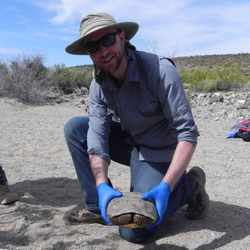Genetic relatedness cannot explain social preferences in black-and-white ruffed lemurs, Varecia variegata
 Authors:
Authors:
Andrea L. Baden, Timothy H. Webster, Brenda J. Bradley
Abstract:
Fission–fusion social dynamics are common among a number of vertebrate taxa, and yet the factors shaping these variable associations among subgroup members have not been widely addressed. Associations may occur simply because of shared habitat preferences; however, social ties may also be influenced by genetic relatedness (kinship) or social attraction. Here, we investigate the association patterns of wild black-and-white ruffed lemurs, Varecia variegata, in Ranomafana National Park, Madagascar using behavioural, spatial (home range) and genetic data from 24 individually identified animals. We collected 40 840 records of group composition over a 17-month period and from this calculated pairwise association indices. We also used ranging coordinates and genetic samples to estimate patterns of spatial overlap and kinship, and then related these measures to patterns of affiliation. From these analyses, we found that dyadic ruffed lemur social associations were generally sparse and weak, that home range overlap was minimal and that average relatedness within the community was low. We found no evidence that kinship was related to patterns of either spatial overlap or social association; instead, associations were primarily driven by space use. Moreover, social preferences were unrelated to kinship. While home range overlap explained most of the variation seen in social association, some variation remained unaccounted for, suggesting that other social, ecological and biological factors such as shared resource defence or communal breeding might also play a role in social attraction. Our results further highlight the need to consider individual space use and nuances of species behaviour when investigating social preference and social association more generally.
This publication can be viewed here
